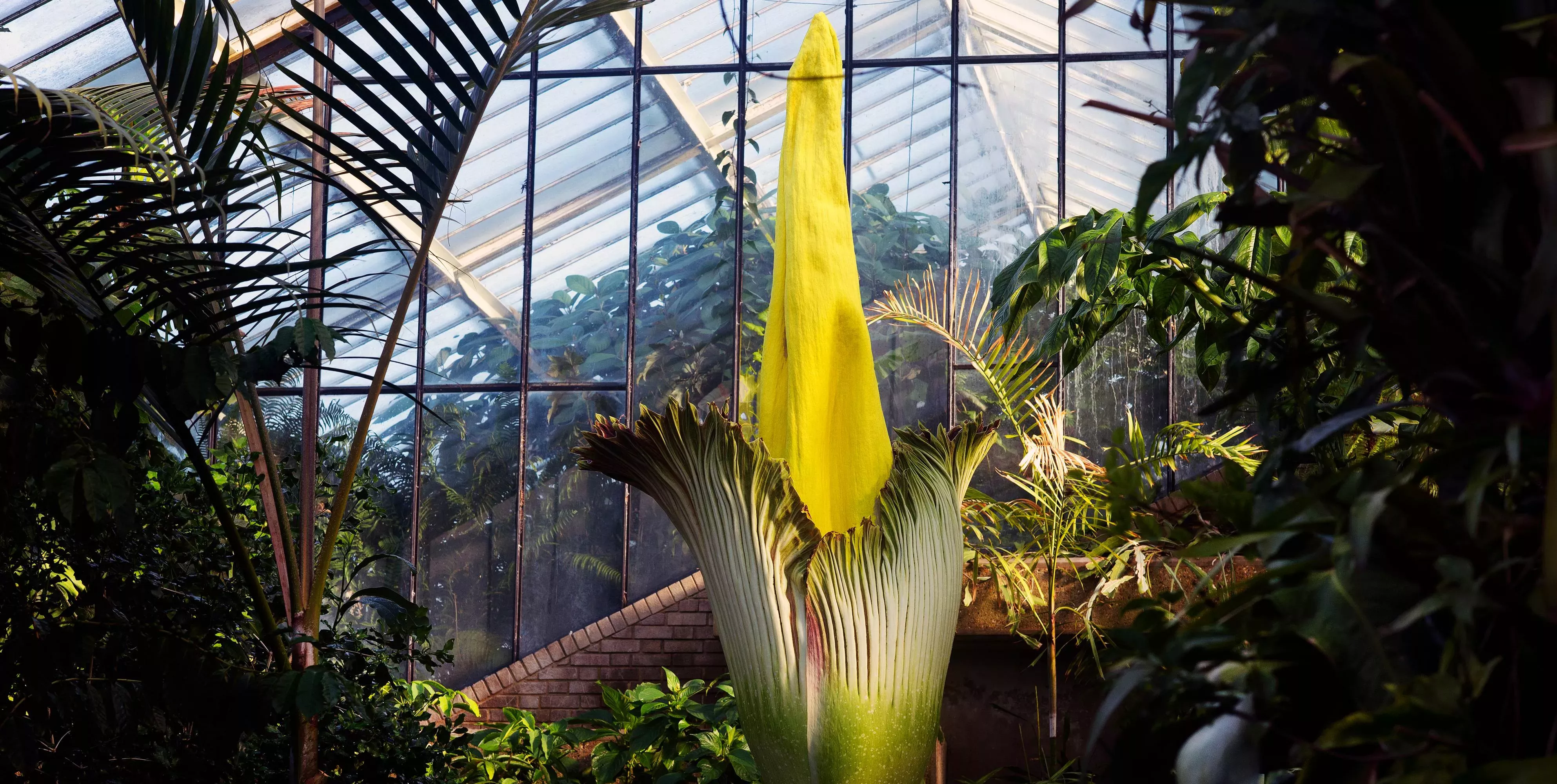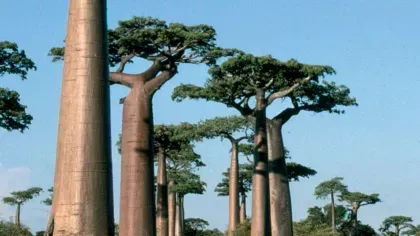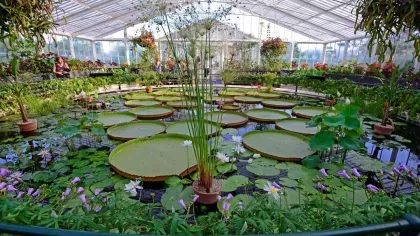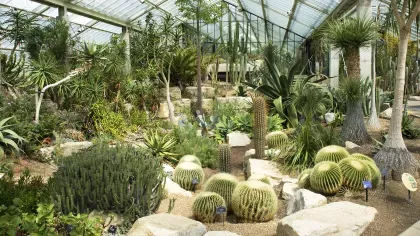7 February 2022
Stars of 'The Green Planet' TV series
Meet some of the plant heroes featured in David Attenborough's new BBC series.

If you have watched the brand-new BBC series The Green Planet, you will agree that David Attenborough is not the only star.
Meet five showstopper plants from The Green Planet that must be seen to be believed.
1. Saguaro (Carnegiea gigantea)
These desert icons not only provide food to indigenous peoples all across the Southwest United States and North Mexico, but also provide a home to a variety of bird species.
Woodpeckers, such as the gila woodpecker (Melanerpes uropygialis) and the gilded flicker (Colaptes chrysoides), drill into saguaro cactus stems to create nest holes.
In response, the cactus forms hard, woody callus tissue around the hole.
These nest holes provide woodpeckers with shelter from the elements, as well as the prying eyes of potential predators.
Gila woodpeckers abandon holes after one season, allowing other birds like elf owls (Micrathene whitneyi), house finches (Haemorhous mexicanus) and wrens (Troglodytidae) to move in.
When the saguaro eventually dies, only the hard callus material remains, which is known as a saguaro boot. In the past, these were used by indigenous tribes like the Tohono O’odham as water containers.

2. Neptune grass (Posidonia oceanica)
All over the Mediterranean Sea, neptune grass grows in huge underwater meadows.
Alongside providing homes to a variety of marine life, neptune grass plays a vital role in improving the health of our oceans.
Neptune grass is incredibly good at capturing sediment, including carbon. It is also very resistant to decay from bacteria, so the carbon remains trapped for a long time.
In doing so, neptune grass is reducing the amount of carbon in the atmosphere, helping to tackle climate change.
Even when neptune grass is damaged by ocean currents, it can still help clean up the oceans.
Shredded leaves become buried under ocean sediment and form fibres which gather into oval-shaped masses call ‘neptune balls’.
These fibres also entrap plastic pollution in the ocean as they form.
Eventually these neptune balls wash up onto beaches, taking the plastic with them, naturally removing it from the oceans.

3. Fire lily (Cyrtanthus ventricosus)
Like the mythical phoenix, the fire lily rises from the ashes after raging fires.
These red and pink flowers are a common sight across the fynbos, heath and shrubland that stretches across the Cape Fold Mountains of South Africa.
The sole pollinator of these beautiful scarlet blooms is the Table Mountain pride butterfly (Aeropetes tulbaghia).
As the butterfly stretches its proboscis to reach the nectar at the base of the flower, it brushes against the pollen-carrying parts of the plant.
As they move from one flower to the next, the butterfly pollinates fire lilies across the fynbos which then seed in preparation for the next fire.
The fire lily also has to contend with other nectar hunters, like hungry sunbirds (Nectariniidae) who peck at the base of the flowers to steal nectar without pollinating them in return.

4. Balsa tree (Ochroma pyramidale)
You might not think being the 'softest hardwood' would be a good thing, but it is why the balsa tree is such a popular commercial crop.
In life, the tree has large cells filled with water. When the wood is dried, this water is removed, leaving balsa wood cells full of air. This results in a strong but lightweight wood.
Balsa wood has a wide variety of uses, including surfboards, wind turbine blades and model planes.
Most commercial balsa wood comes from Central and South America, where it is grown in dense plantations and can be harvested in as little as six years after planting.

5. Giant waterlily (Victoria amazonica)
An icon of the Amazon rainforest, the giant waterlily is the largest waterlily in the world with leaves reaching three metres wide.
But another part of the giant waterlily is equally impressive: its flowers.
Giant waterlilies are pollinated by a species of scarab beetle (Cyclocephala hardyi) which is attracted to its fragrant, white flowers that open at night.
The flowers produce heat to help spread their fruity smell (like pineapple or butterscotch) as far as possible.
During the day, the flower temporarily traps any visiting beetles and releases its pollen.
This also triggers the release of chemicals in the flower that change its colour from white to a bright pink.
On the second night, it opens again so that the beetle can visit another flower and pollinate it.
Since the beetles are only attracted to white flowers, the colour change ensures that they only visit flowers that are yet to be pollinated. How clever!
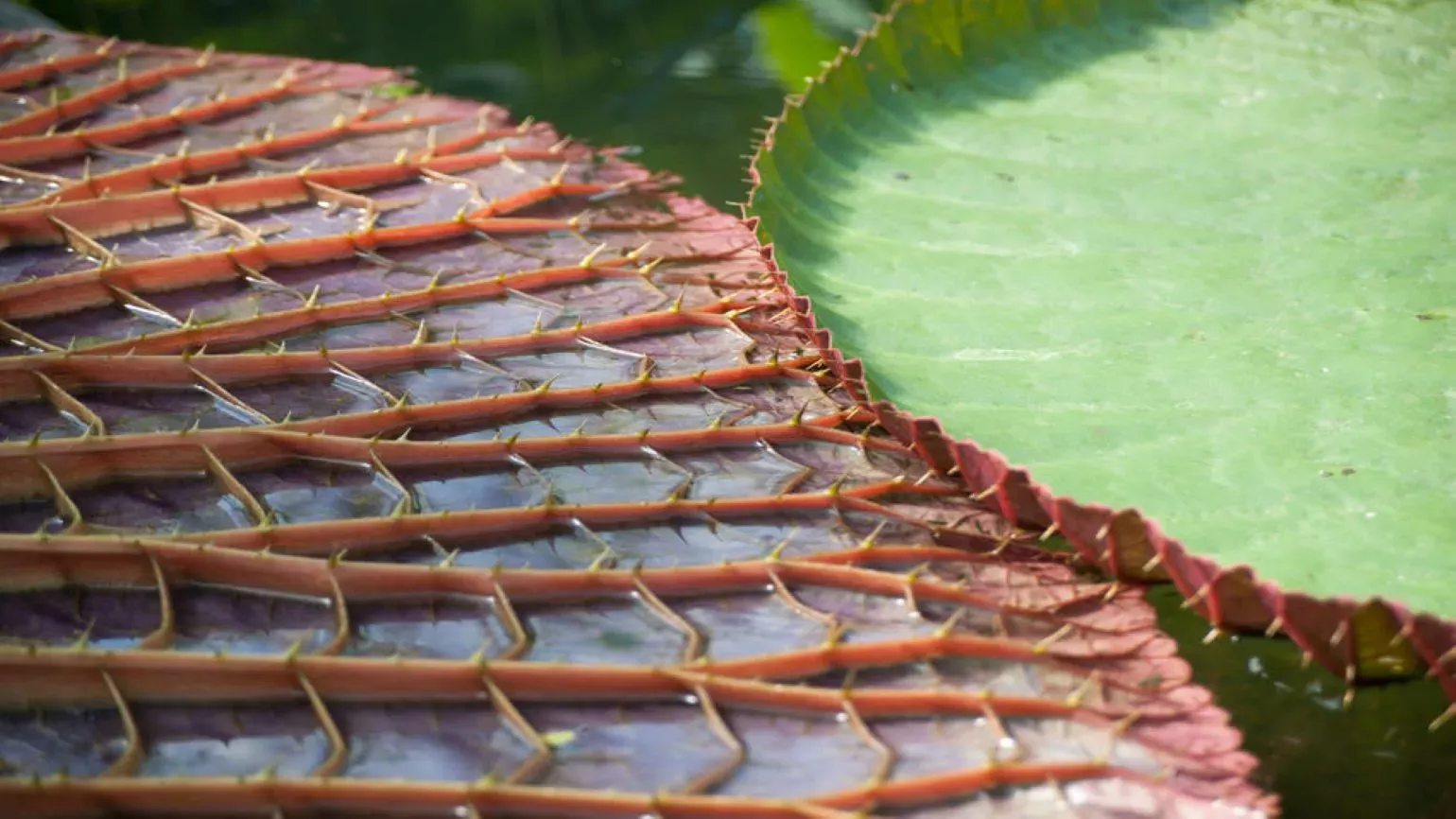

You can experience the giant waterlilies yourself in Kew's Princess of Wales Conservatory, as well as the Waterlily House during the summer months.
The Green Planet Augmented Reality Experience
Discover the secret kingdom of plants at The Green Planet AR Experience.
Join Sir David Attenborough on a journey through five digitally-enhanced worlds, from the rainforest to the desert, as you've never seen them before.
